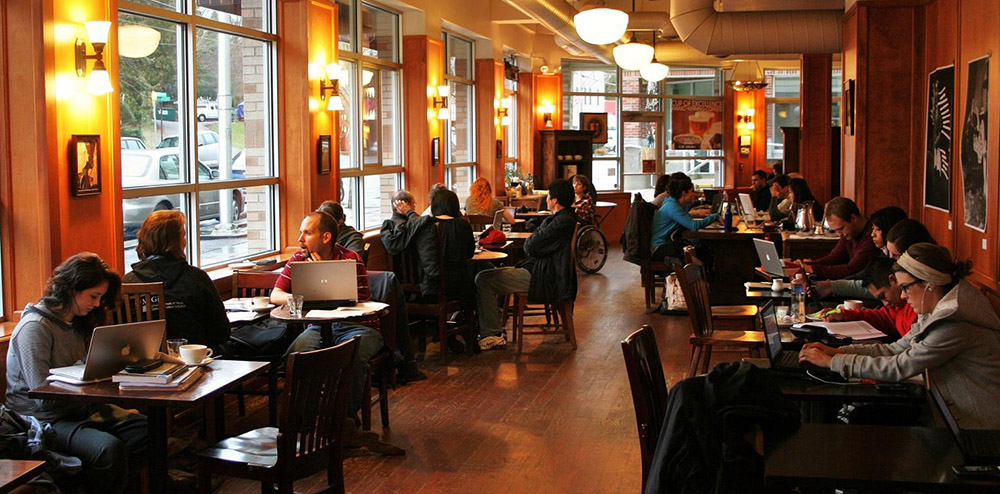
Every morning, I stop at Starbucks on my way to work for a caffeine fix.
I park out front, run inside and bypass the line to where my Americano is ready and waiting. All I have to do is order through the app before I leave my house. When I show up a few minutes later, voila. Convenience factor: 100!
[source: Forbes] It’s crazy to think that everything we could ever need or want is available at the touch of a button. It’s not just my morning coffee; digitization has crept into more areas of my life than I ever imagined. I can order my groceries online and buy literally anything from Amazon with just a few clicks. I’d never even have to leave the house if I didn’t want to.
But as much as I love that I can grab my coffee in five seconds flat without waiting in line, I’ve noticed that Starbucks employees often neglect in-store customers to keep up with digital demand. Every time I rush past the line, I can’t help but wonder: what effect has digitization had on the in-store customer experience?
Don’t Ignore What’s Right in Front of You
Starbucks isn’t the only company that has taken their service online. These days, pretty much every brand these days has an online version of their product or service. There’s no doubt that digital is a major part of our future. If a business fails to jump on board, chances are it won’t be around for long. But at what point does digital go too far?
A colleague of mine recently told me about an experience she had at a trendy new restaurant. She waited over an hour for a table and another hour for her food. It was a Friday night and the place was packed, but that wasn’t the reason for the delay. The kitchen staff couldn’t keep up with the overflow of online orders from DoorDash. Even worse, in-person customers had to wait outside to make room for the dozens of delivery drivers waiting on their orders.
Needless to say, it wasn’t a very positive dining experience. It seems like the restaurant got too caught up in the online trend. But if they’d focused less attention on online orders and more on the people physically sitting in their restaurant, they’d have turned more tables, made more money and had more satisfied customers.
This isn’t an isolated incident: companies are beginning to realize that digital can’t provide the customer experience people crave. Customers’ need for instant gratification no longer outweighs the need for human connection. That’s why so many previously online-only brands are opening up bricks-and-mortar stores: to give people both convenience and an experience.
Have Your Cake and Eat It Too
I’ve learned over the years that customer needs aren’t binary — they’re on a spectrum. It’s not about choosing either convenience or a personal experience. People want both, and brands can (and should) appeal to people’s diverse and evolving needs.
That’s why we recently upgraded our online booking software and introduced multi-channel service. We made it as easy as possible for people to contact us when, where and however is most convenient for them. Whether they want to book a service on the phone or online, on their desktops or mobile, via phone call or text, we’re here for them whenever they need us.
All of this proves that the most important thing for staying ahead isn’t digital — it’s customer centricity. Companies need to put the customer’s needs, beliefs and preferences at the heart of their decision-making. Of course, this will inevitably include technological innovation, but customer centricity doesn’t mean blindly jumping on the latest bandwagon. It means learning how people think, asking the right questions and determining how to best serve them. And most importantly? It means taking care of all your customers — on and offline.
